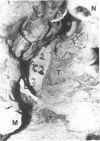Abstract
Surgical exposure of the nasopharyngeal region of the cranial base is difficult because of its proximity to key anatomic structures. Our laboratory study outlines the anatomic basis for a new approach to this complex topography. Dissections were performed on eight cadaver halves and two fresh specimens injected with intravascular silicone rubber compound. By utilizing facial soft tissue translocation combined with craniofacial osteotomies; a wide surgical field can be obtained at the skull base. The accessible surgical field extends from the contralateral custachian tube to the ipsilateral geniculate ganglion, including the nasopharyax; clivus, sphonoid, and cavernous sinuses, the entire infratemporal fossa, and superior orbital fissure. The facial translocation approach offers previously unavailable wide and direct exposure, with a potential for immediate reconstruction, of this complex region of the cranial base.
Full text
PDF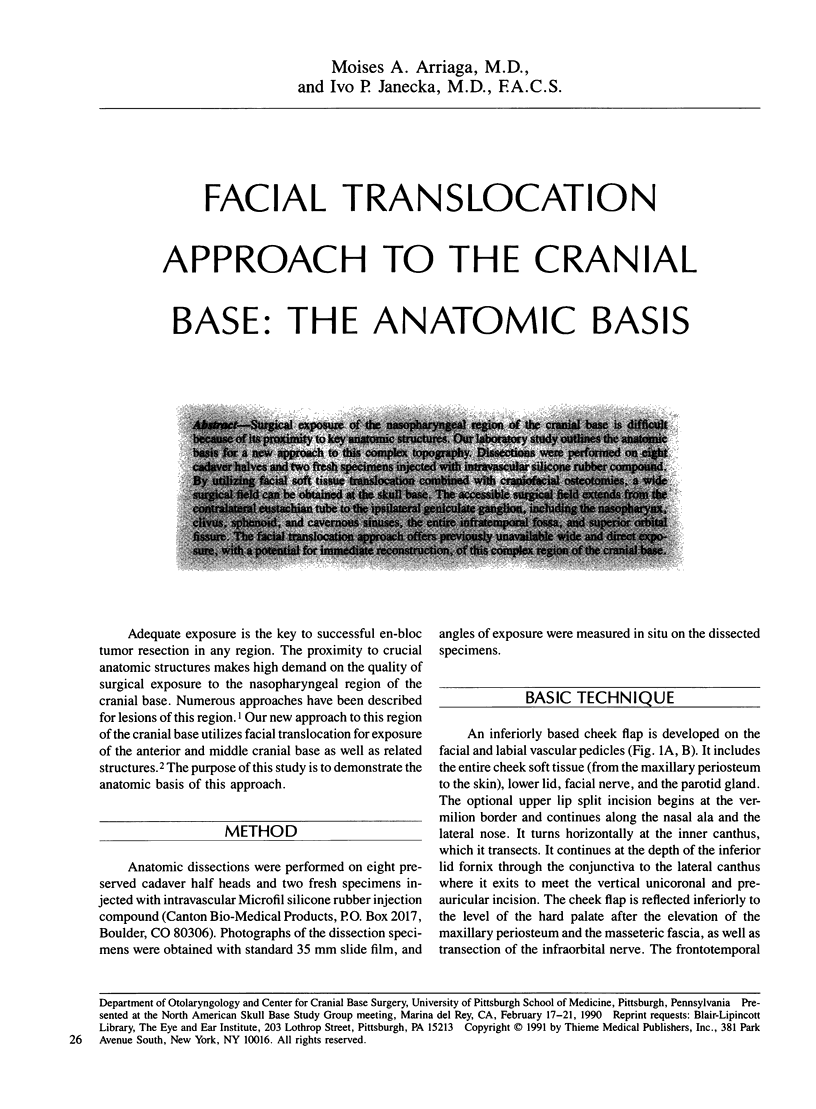
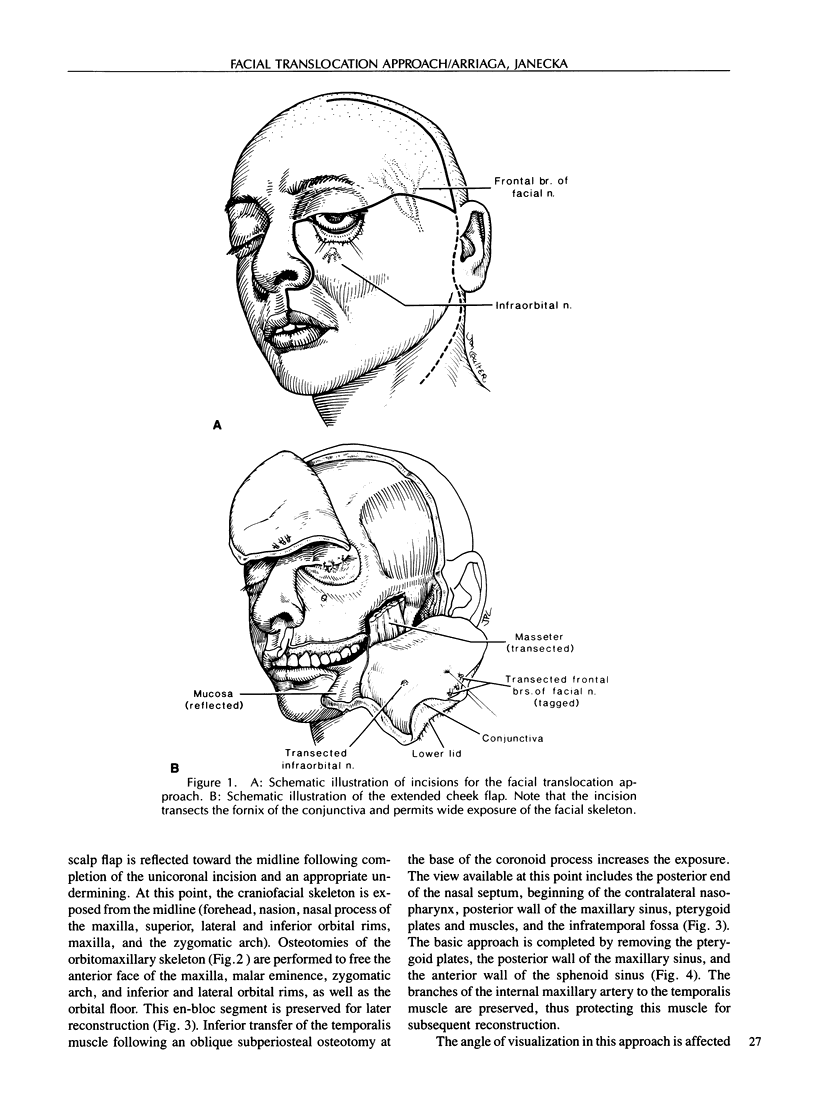
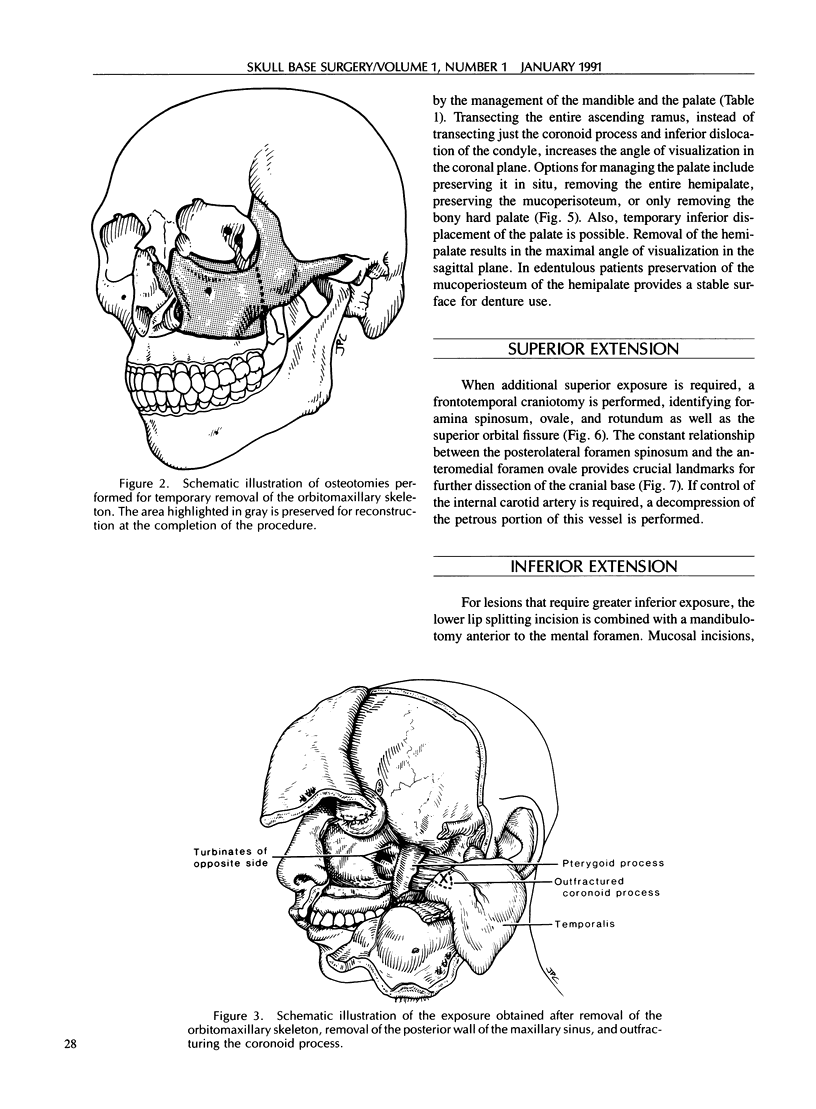
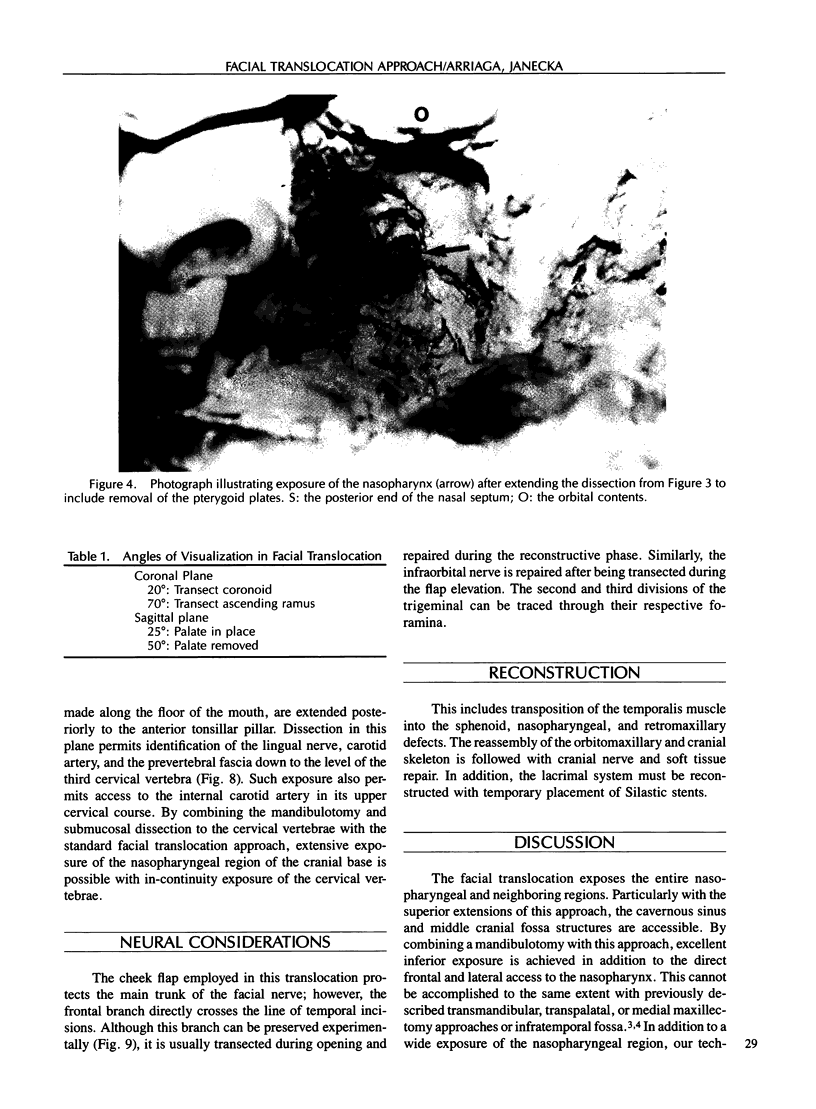
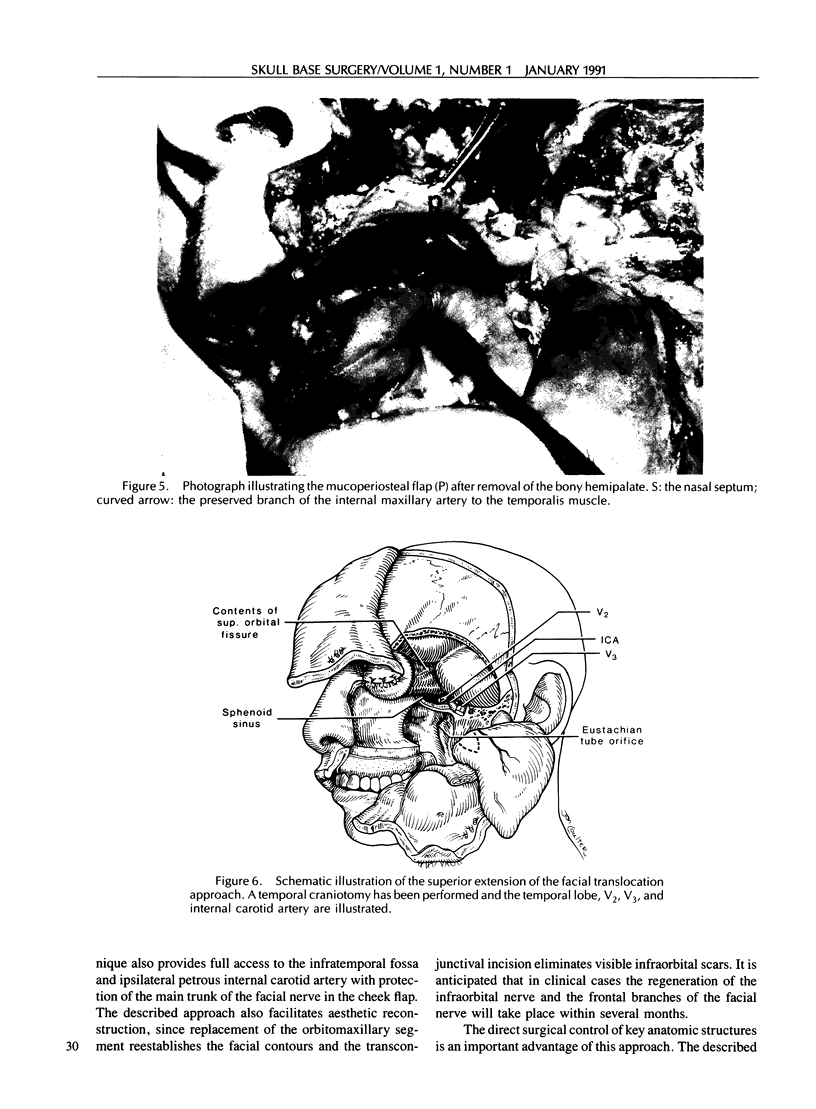
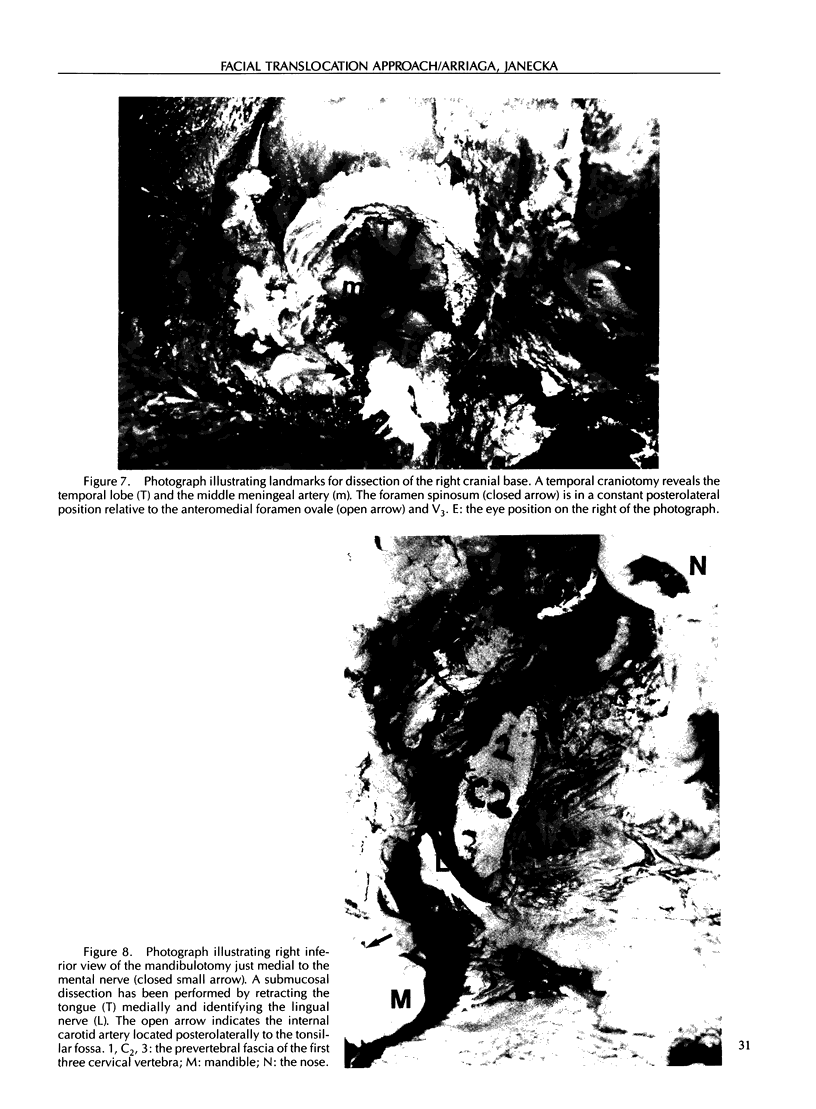
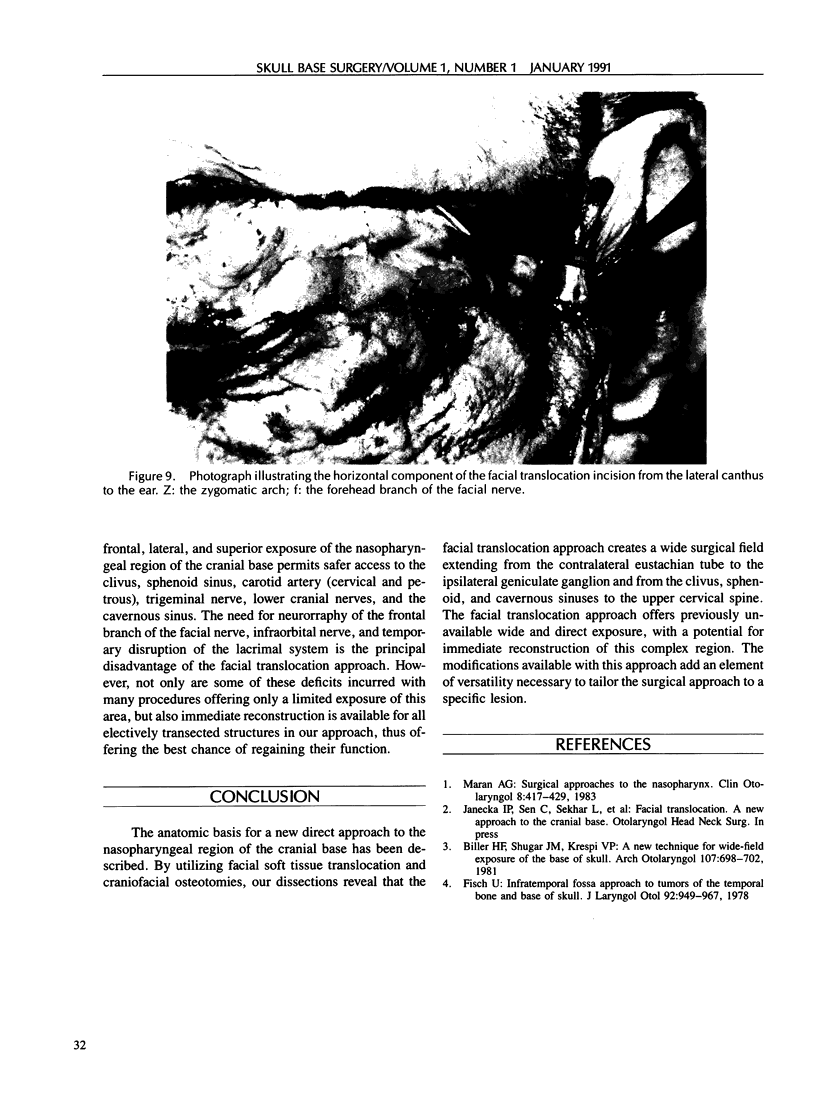

Images in this article
Selected References
These references are in PubMed. This may not be the complete list of references from this article.
- Biller H. F., Shugar J. M., Krespi Y. P. A new technique for wide-field exposure of the base of the skull. Arch Otolaryngol. 1981 Nov;107(11):698–702. doi: 10.1001/archotol.1981.00790470046011. [DOI] [PubMed] [Google Scholar]
- Fisch U. Infratemporal fossa approach to tumours of the temporal bone and base of the skull. J Laryngol Otol. 1978 Nov;92(11):949–967. doi: 10.1017/s0022215100086382. [DOI] [PubMed] [Google Scholar]
- Maran A. G. Surgical approaches to the nasopharynx. Clin Otolaryngol Allied Sci. 1983 Dec;8(6):417–429. doi: 10.1111/j.1365-2273.1983.tb01461.x. [DOI] [PubMed] [Google Scholar]






